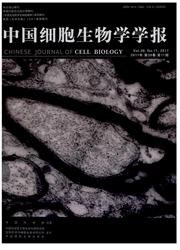

 中文摘要:
中文摘要:
肝纤维化是多种慢性肝病进展至肝硬化的中间过程,其特征是以胶原蛋白为主的细胞外基质(extracellular matrix,ECM)的合成与降解失衡,导致大量ECM沉积。在肝纤维化发生、发展过程中,常伴有肾素–血管紧张素–醛固酮系统(renin-angiontensin-aldosterone system,RAAS)的激活,血管紧张素转换酶–血管紧张素II-血管紧张素II受体1(angiotensin-converting enzymeangiotensin IIangiotensin II type 1 repector,ACE-Ang II-AT1R)轴和血管紧张素转换酶2-血管紧张素(1-7)-Mas受体[angiotensin-converting enzyme 2-angiotensin(1-7)-Mas,ACE2-Ang(1-7)-Mas]轴是调节肝纤维化的两大重要因素。
 英文摘要:
英文摘要:
Liver fibrosis is the transition of many chronic liver diseases to liver cirrhosis, which is characterized by the imbalance of extracellular matrix(ECM) synthesis and degradation, leading to a large amount of ECM deposition. During the development of liver fibrosis, it's often accompanied by the activation of reninangiontensin-aldosterone system(RAAS). The angiotensin-converting enzymeangiotensin II-angiotensin II type 1 repector(ACE-Ang II-AT1R) and angiotensin-converting enzyme 2-angiotensin(1-7)-Mas [ACE2-Ang(1-7)-Mas] of RAAS are two most important regulating factors for the process of liver fibrosis.
 同期刊论文项目
同期刊论文项目
 同项目期刊论文
同项目期刊论文
 期刊信息
期刊信息
